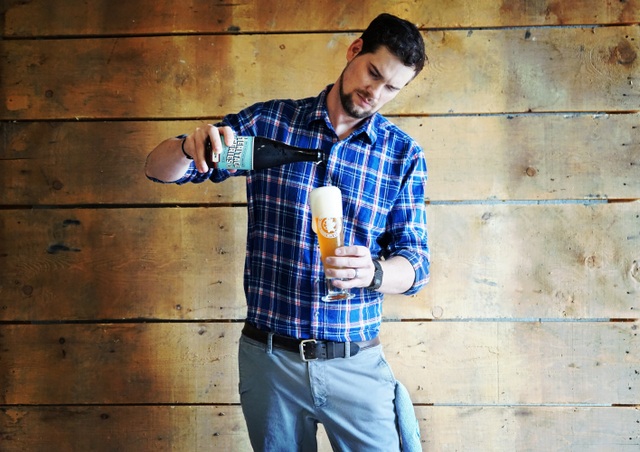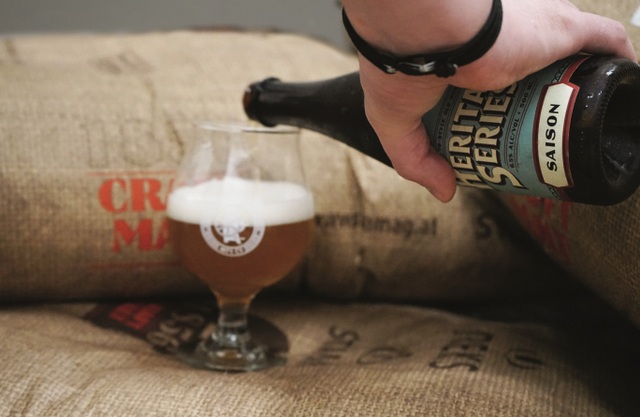
Beer has always been a social beverage and a reflection of its environment. A malt derived beverage for all seeking refreshment and a little relaxation. Saison was developed as a staple product in the 1700s for farm (seasonal) laborers. These seasonal workers or “saisonaires” were compensated with currency of some sort and liquid nourishment from the local farmhouse brewery.
The Wallonia region which encompasses mostly the southern half of Belgium today is responsible or at least credited with the saison style. While other European regions brewed low ABV beers for day laborers and the Egyptian empire brewed a not so vastly different beverage for those building the Great Pyramid around 2500 B.C., it is the beer of Wallonia that we are highlighting here.
Before the Industrial Revolution in the mid-1700s, communities were mostly self-reliant groups when it came to the basics of life. This simple fact helped establish the farmhouse breweries that are so ubiquitous with the region. Beer and brewing varied drastically from region to region, especially in regards to the raw materials available. In southern Belgium these brewers were plentiful and produced various interpretations of a saison.
The typical saison was a beer brewed in winter or the colder months to allow for more controllable fermentations and to keep workers employed through the slower/colder months. The beer was then aged/stored to be served the following fall to the workers who were there to assist with the harvest. The beer itself was usually a 3 to 3.5 percent ABV — as most beers were before the 20th century. This created a more stable product without the use of too much of the grains needed for baking and seed.

While the ABV was similar, the base product varied from region to region and even town to town. The base would vary depending on the grains grown in the fields. Wheat, barley, oat, rye, spelt or other cereal grains. Hops were a staple in Belgium and the Netherlands since the 13th century and were grown widely and relatively easily procured if not grown on site. The hops would have been used dried and aged and not fresh as the harvest and usage are several months apart. Water sources were regional as well and lent their specific profiles to the final product. The yeast used to inoculate the beer was usually of a wild or airborne variety, but yeast cakes from larger breweries may have been employed as well, although rare.
These simple truths lent to a tarter but very dry beverage. Full attenuation was surely a determining characteristic of a mixed fermentation ale aged six to 10 months. The beer would have been blonde to dark copper, the color, dependent on the malting and drying of the grains. A weak head and notes of citrus from lactic and Brettanomyces presence would be noted. Hops would be used in decent quantities for preservation, but low Alpha’s and the fact that the hops would have been aged sometimes more than a year would lend to a low hop presence in the final product.
The lineage of that beer is still alive but not as strictly followed as you may think. The contemporary saison revolves closely around the most notable example: Brasserie Dupont’s Saison Dupont. This prototype of the style is hazy with a deep golden hue with the slightest tough of orange. The fluffy head is almost méringue-like in its presentation and in my humble opinion is one of the most photogenic beers when poured properly.
Saison Dupont sits at 6.5 percent ABV and produces phenolic compounds that burst with green peppercorn and dried lime rind. Notes of Brettanomyces enrich the nose with cured leather and dusty straw. The mouthfeel is almost champagne like with tight carbonation sometimes reaching 4.0 volumes due to the high attenuation and bottle conditioning procedure carried out by the brewers at Brasserie Dupont.
So, if you were to taste a traditional saison next to its more contemporary interpretations, which have defined the style since the mid-1800s, they may show differently but the spirit is still there and I’m one of those individuals that will always clamor for a good saison. I have been a loyal devotee to the style since my first drink almost 15 years ago now — before my education and experience in the craft beer game. I have had the opportunity to travel Europe and the States and try some wonderful interpretations of the style.

For my own rendition it has been a trek spanning eight plus years trying to encompass the complex nuances of the style and bring a balance of tradition and personal interpretation to the beauty that is saison.
I am a traditionalist at heart and focus most of my production techniques on a more European influence. A blended fermentation is essential. A yeast that can impart solid Phenolic notes without getting harsh or fusel in the nose is important. I use three yeast strains in order to accomplish the final product. I ferment at 81 degrees in order to allow the yeast to properly express itself and encourage full attenuation — i.e. become very dry. I believe Brettanomyces is essential in a traditional saison as it would have been almost uniformly present in pre-1900 open fermentations and the fact that it’s fundamental in the Saison Dupont flavor profile.
My processing focuses on the yeast and not so much the hops or grains. The grain-bill includes barley, wheat, oat and rye with hops being of European Noble varieties with focus on notes of dried flowers and cut grass. Yeast will develop over a long fermentation and conditioning period lasting three months.
My ferment times allow for the Brettanomyces to properly develop before packaging and allow for the creation of a beer that can be properly cellared for years. I invite you to taste our Heritage Saison from Printer’s Ale Mfg. and enjoy the simple pleasure that is a properly made saison.
Josh Watterson is an award winning brewmaster at Printers Ale Mfg. Co. in Carrollton, Ga. A classically trained brewer with a diploma in international brewing technology from the World Brewing Academy, he has benefited from his education in the United States and Germany. With over 12 years in the field and more than eight as a headbrewer and brewmaster, he has amassed more than 60 medals and countless other accolades. In 2014 he earned himself a Brewer of the Year award at the Great American Beer Festival. He has amassed more than 10 awards strictly for the saison category with multiple from the Great American.





[…] Saison on ajalooliselt tuntud kui taluõlu. See on pärit Vallooniast – osa Belgiast, kus räägitakse prantsuse keelt. Saison prantsuse keeles on season ehk aastaaeg. Arvatakse, et see nimi on tekkinud, kuna saisoni pruuliti taludes talvekuudel ning see oli mõeldud just suvel tarbimiseks. Täpsemalt, pruuliti saisoni jõulude ajal, siis kui töölistel ei olnud enam nii kiire, kui soojematel kuudel. Peamiselt oli saison mõeldud talutöölistele ning seetõttu pidi olema värskendav ja kergesti joodav. Neid hooajalisi talutöölisi kutsuti saisonaires’deks. […]